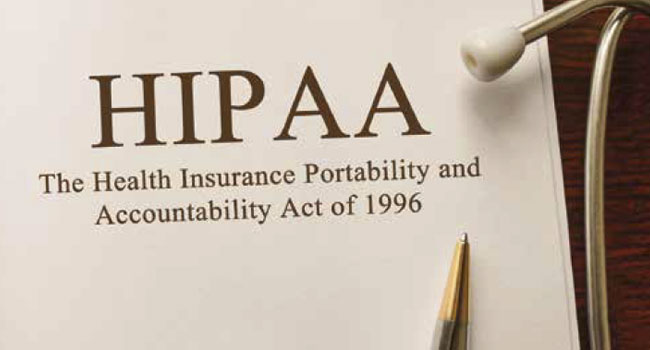
Hidden Cameras in Hospitals: HIPAA Violation or Life Saving Tool?
Exploring the use of covert cameras in healthcare campuses
- By Derek Martinez
- September 01, 2017
IS IT EVER ACCEPTABLE FOR A
HEALTHCARE FACILITY TO INSTALL
AND MONITOR CONVERT CAMERAS
WITHIN A PATIENT’S ROOM? IN
RARE CIRCUMSTANCES, HEALTHCARE
POLICE AND SECURITY
DEPARTMENTS AROUND THE UNITED
STATES ARE INSTALLING COVERT
VIDEO SURVEILLANCE SYSTEMS TO
SAVE THE LIVES OF CHILDREN.
VICTIMS
In 2015, Lacey Spears, mother of Garnett
Spears and former nursing student, was sentenced
to 20 years to life in a Westchester
County, N.Y., courtroom; with the judge stated
that Munchausen syndrome by proxy
(MSBP) had caused Lacey to crave the attention
that being the mother of an ill child
afforded her.
On January 23rd, 2014 Garnett, then only 5
years old, was taken off of life support one day
after being declared brain-dead by physicians.
As her son was lying in his hospital bed in
immense pain and slowly dying, Spears took
to her blog and social media channels, posting
frequent updates for the sole purpose of
gaining attention to herself.
In January 2017 a jury in Tulsa, Oklahoma
jury sentenced another mother, Victoria Lee
to eight years in prison with credit for time
served from her arrest in 2013.
Court documents reveal that Lee had lied
about her daughter’s medical symptoms to
gain personal attention. These fabrications
resulted in Lee’s daughter having unnecessary
medical procedures performed; resulting in,
but not limited to, a spinal tap, EKGs, six
MRIs, physical therapy, and bladder studies.
MUNCHAUSEN SYNDROME
BY PROXY DEFINED
MSBP is a mental disorder in which a parent,
typically the mother, fabricates an illness or
induces a premeditated injury to her child.
Often times the mother will come across as
extremely loving and very concerned for her
child. This expression outward concern often
makes the diagnosis of MSBP very difficult,
without concrete evidence.
Examples of induced injuries are feeding
the child laxatives to induce diarrhea, smothering
with pillows and other objects, poisoning,
and causing rashes using household
cleaners or heavy abrasives. Examples of fabricated
illness include lying about symptoms
and often leads to the perpetrator being the
only one to be able to temporarily cure her
child. Fortunately, MSBP is extremely rare,
with only two victims out of every 100,000
children; although mental health professionals
believe the statistics of victims to be slightly
higher due to undiagnosed cases.
MSBP STATISTICS
- 98% of all MSBP perpetrators are women
- The mortality rate of MSBP is 9%
- Most victims are under the age of six
- 90% of parents with Munchausen’s have a
great deal of medical knowledge
- 25% of MSBP involve two or more siblings
- Most cases start at infancy (before the age
of 2)
SECURITY’S ROLE IN THE
PROTECTION PLAN FOR MSBP
Leading security expert in MSBP, Bonnie
Michelman, CHPA CPP, suggests implementing
a multi-disciplinary child protection team
that would become immediately involved as
soon as MSBP is suspected by staff. She states
the team should include hospital security
management, a mental health practitioner,
the primary care nurse, and an epidemiologist
for the purpose of potentially finding a
cause for a disease. Police and security personnel
would be at the forefront of the team,
with early involvement to assist with the
investigation, the collection of evidence,
assisting in case development for the prosecution,
and possible arrest.
The use of security surveillance cameras in
hospitals is already common place considering
there are camera deployments in parking
garages, hospital entrance points, public hallways,
cafeterias, gift shops, waiting rooms, and
elevator lobbies. Video surveillance deployments in patient areas have proven to be controversial among some
healthcare groups. Unions and patient privacy advocates have led to
limited camera deployments for patient monitoring in some cases.
While the use of video surveillance in patient areas has proven to be
controversial at several hospitals, many Risk, Security, and Ethics committees
are implementing the use of covert video surveillance cameras
for patient safety.
Covert video applications have been able to be put into place on the
bases that patients receive a written privacy policy stating that their
Personal Health Information (PHI) may be shared for medical purposes
as well as “to report neglect or abuse to the appropriate state
authorities.” While convert video installments have been deployed to
identify wrong doing these same covert systems have been instrumental
in establishing innocence for those parents and caregivers mistakenly
suspected of Munchausen.
In a 2000 study published by the American Association of Pediatrics
and conducted by Children’s Healthcare of Atlanta at Scottish Rite, the
use of covert video surveillance in suspected MSBP cases was instrumental
in the diagnosis of 56% of the cases. The study concludes that
“All tertiary care children’s hospitals should develop facilities to perform
covert video surveillance in suspected cases.”
Security departments have a wide array of covert video options
including high-resolution pin hole cameras with various mounting
options. These off-the-shelf pin hole cameras can then be custom built
into the natural environment using surrounding objects and equipment.
Other options include covert camera clocks, pens, electrical
receptacle plates, tissue boxes, and even covert video biomedical waste
bins. Security departments will then choose a systems architecture to
identify how video will be transferred and recorded. Some covert cameras
have on edge recording within the camera using micro USB cards,
while others integrate with external recording devices. Security departments
can then choose a wired or wireless approach to retrieving live
or recorded video.
While MSBP is relatively rare, the abuse of elderly and disabled
patients is at an all-time high with an expected 2.1 million abuse cases
in 2016; of which covert cameras could also help identify and prosecute.
These are all things to consider when asking the question, is it
ever acceptable for healthcare facility to install and
mother covert cameras within patient’s room?
This article originally appeared in the September 2017 issue of Campus Security Today.